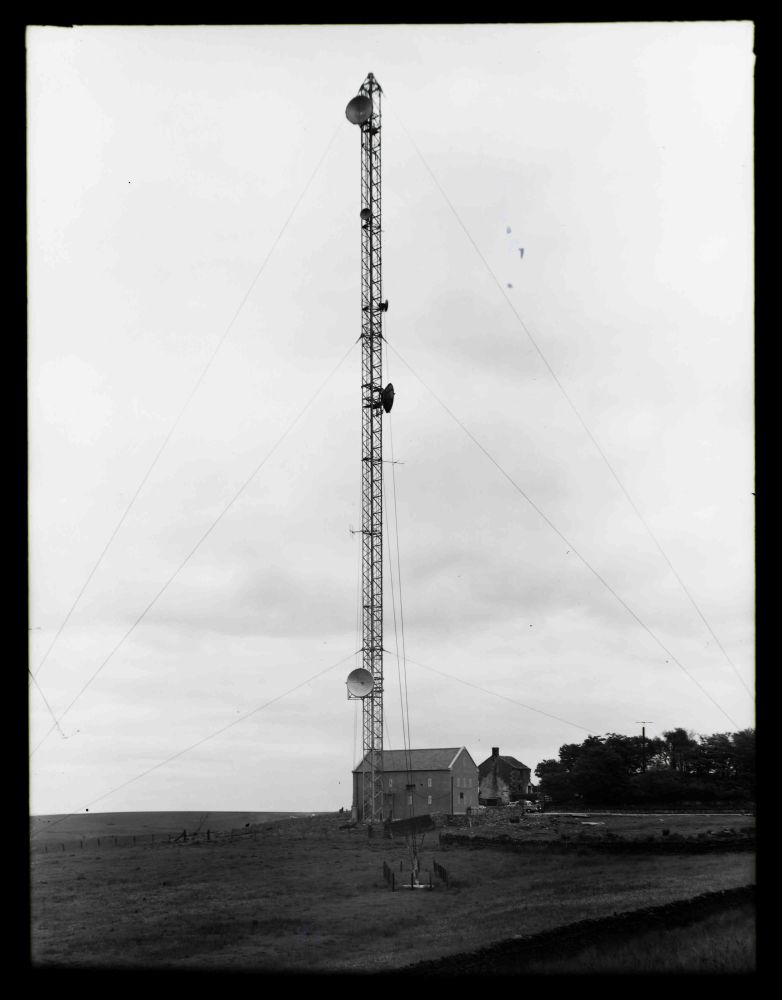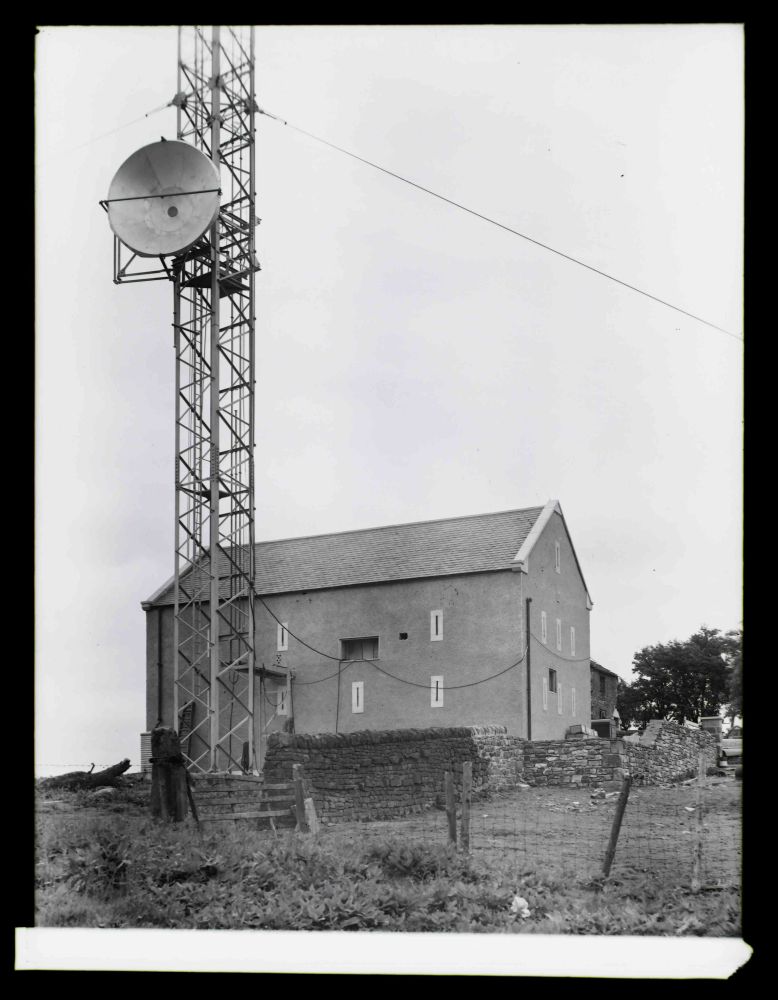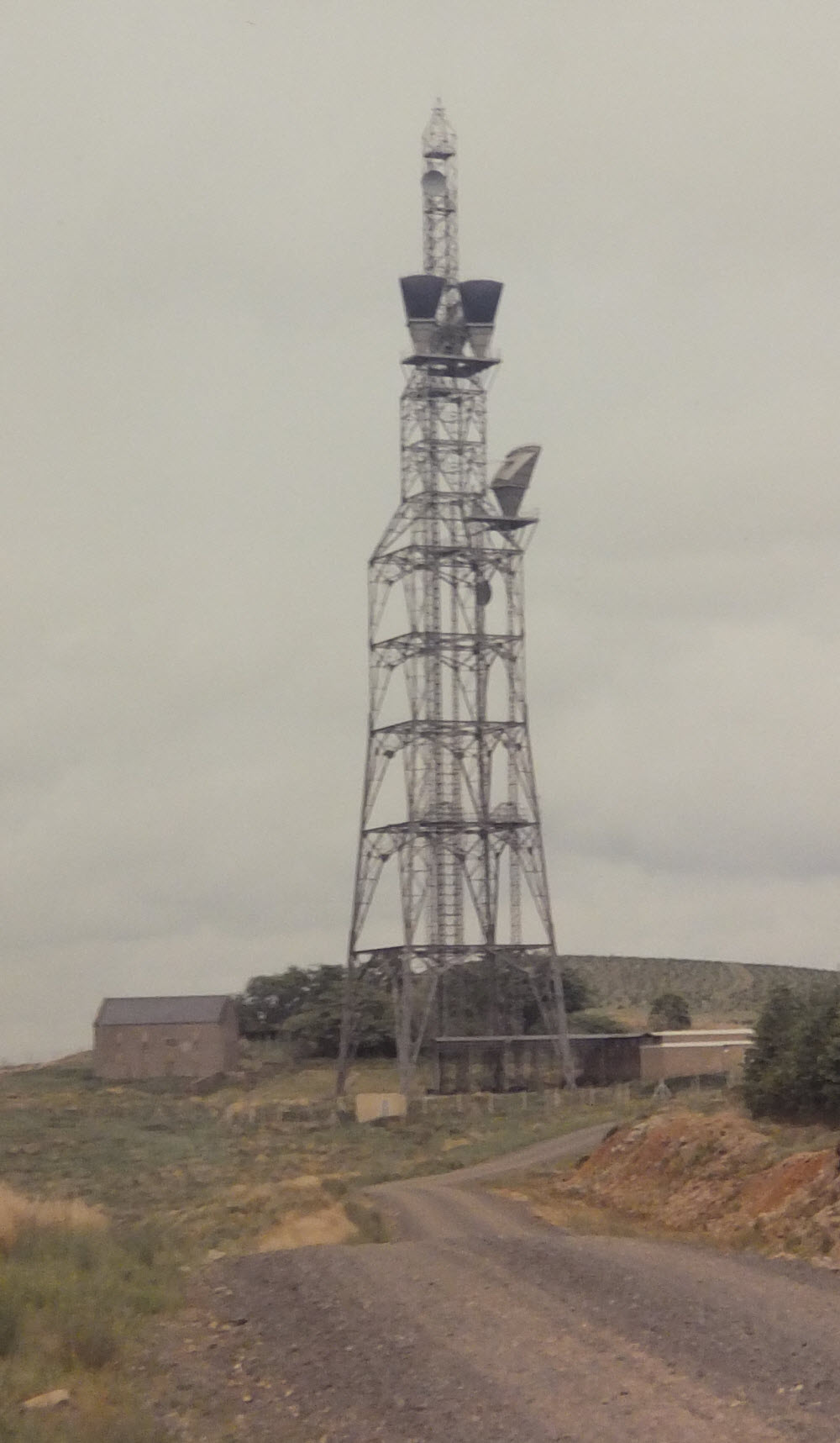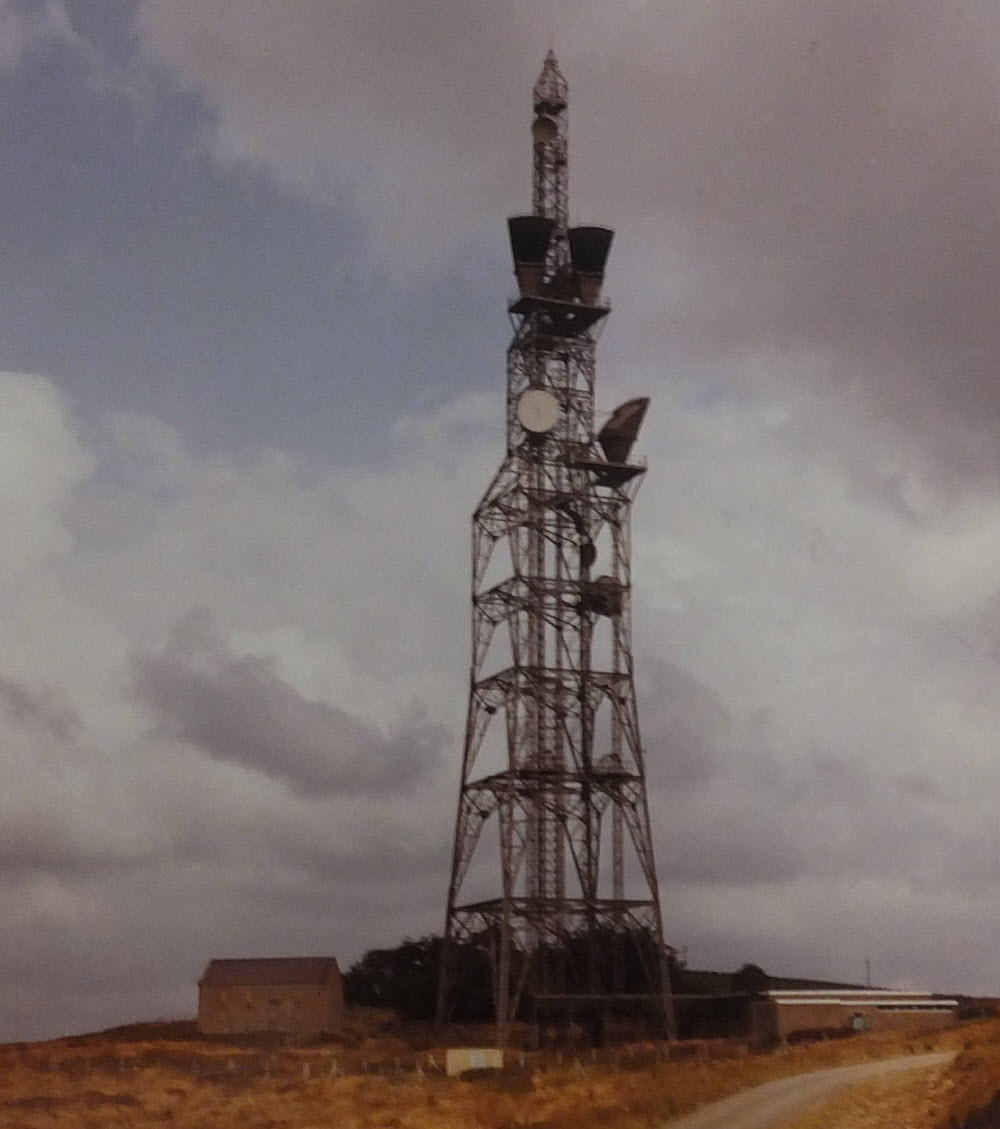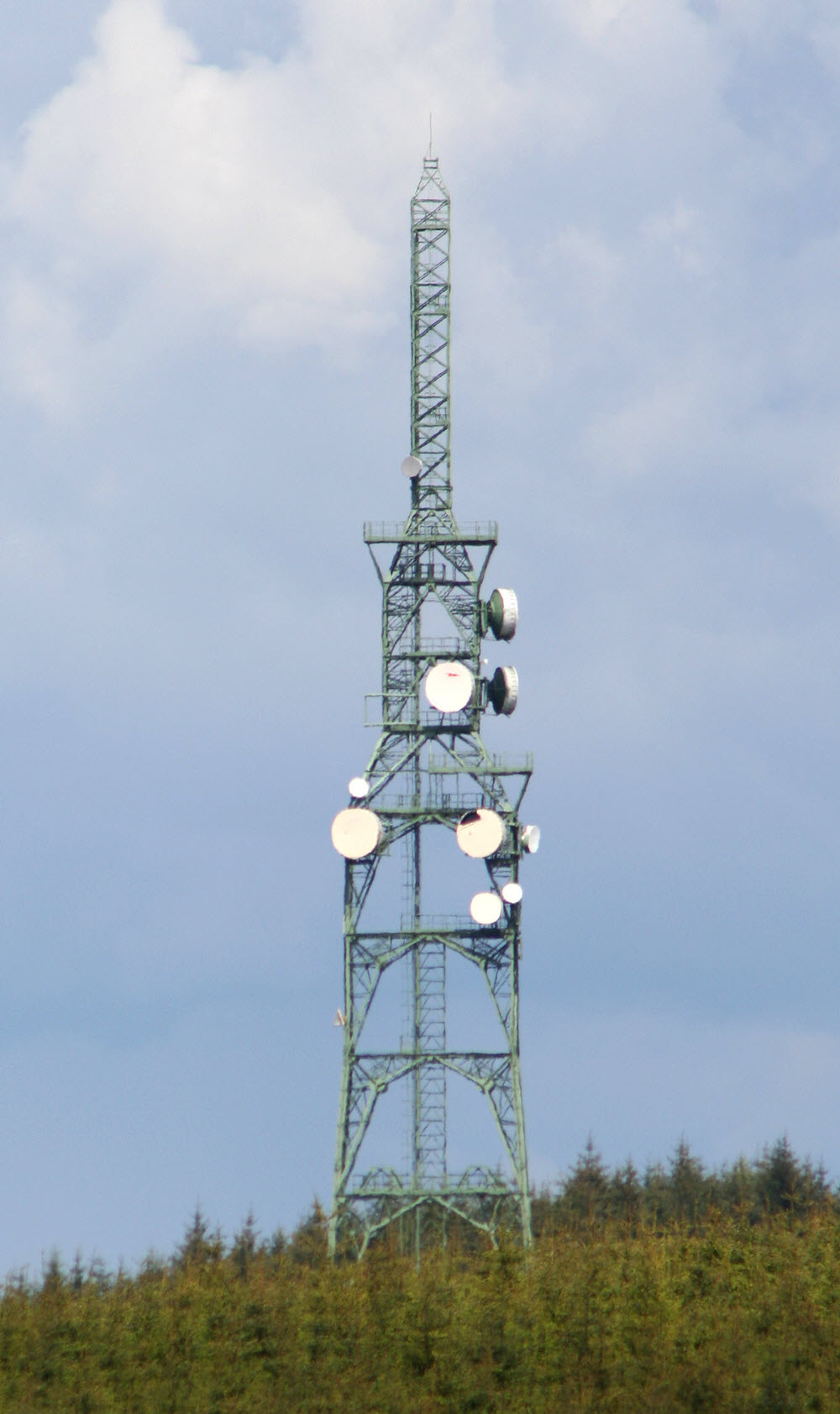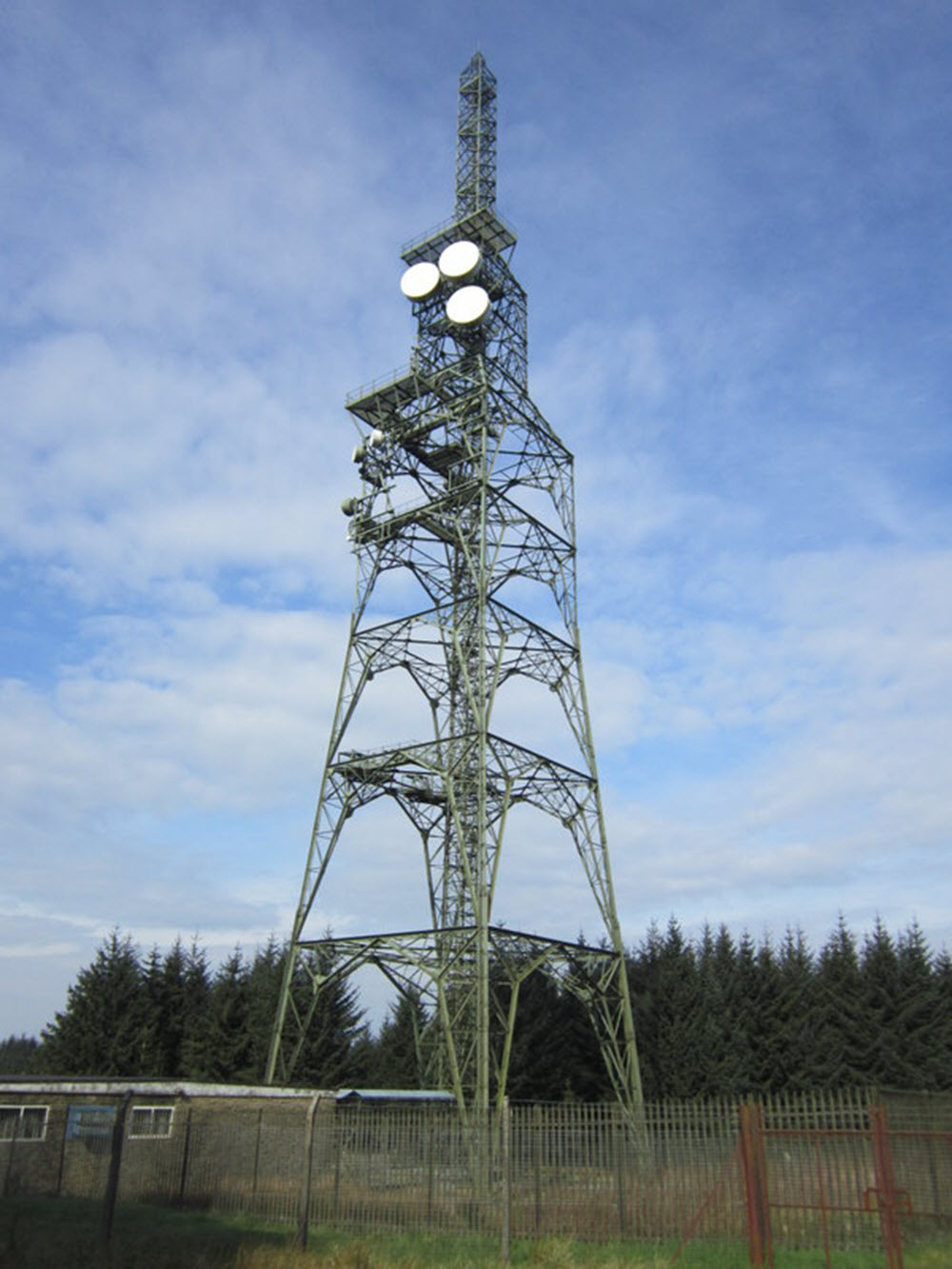History
Hopealone is shown on the 1959 Network Map linking Pontop Pike with Carlisle (where there was only limited connectivity at the time) and with the BBC transmitter at Sandale, replacing the temporary site at Slippy Stones. The Engineer in Chief's Report to March 1951 provides some clarification as to the sequence: The Carlisle - Hopealone - Pontop Pike television link was brought into service for the I.T.A. in December 1958. ... and ... Hopealone - Sandale Fell: A contract has been placed for the replacement by permanent equipment of the temporary link using outside-broadcast type microwave equipment, which provides service to the B.B.C television tranmitting station...
Elsewhere the Report notes: At Hopealone [...] the proximity of the area-of-search to Hadrian's Wall gave rise to serious planning objections [but] it was found possible to acquire and adapt an existing barn. By 1967, however, approval was obtained for a standard pattern building and "standard" tower. Unfortunately the BT Archive photos showing this delevopment are available only in "thumbnail" size - it appears the mast was then carrying two dishes facing Pontop Pike and the new tower was equipped with two pairs of horns (see 1975 photo below).
The original use of Hopealone was to feed ITV from west to east, providing a "network" source to Tyne Tees, and then feed BBC from east to west, replacing the interim arrangement at Slippy Stones. Subsequent reorganisataion of the the Post Office network and expansion of BBC and IBA made the two-hop link between Carlisle and Pontop Pike (serving Newcastle) a significant route for television distribution. By the late 1960s it is likely the feed to Sandale ran via the TV Network Switching Centre at Carlisle. The route may have been used for telephony, eventually, but network planning documents relating to 1970s expansion at Newcastle state that the link was used only for television.
